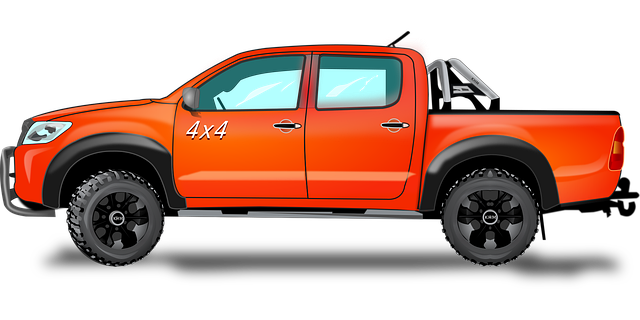Hitch balls are crucial tools for truck operations in Brownsville, offering secure attachment points for towing and hauling. They enhance logistics, operational safety, and fleet efficiency by securing cargo, preventing shifts during transit, and reducing accident risk. With various options available, fleet managers can choose hitch balls tailored to their needs, from standard round balls for light-duty towing to custom-sized balls for heavier loads. Installation requires matching ball size to the hitch receiver, checking weight capacity, and considering mounting patterns. Brownsville's fleet truck diagnosis tools aid in selecting the right components while adhering to local regulations. Future advancements like AI and IoT will further optimize maintenance and performance of these essential tools.
Hitch balls are crucial components for truck operations, facilitating secure and efficient cargo hauling. This article provides an in-depth look at hitch balls, their purpose, and significance for fleet managers. We explore different types, guiding you on compatibility, installation, and maintenance. Specifically, we focus on Brownsville, Texas, fleet manager needs, local regulations, and best practices. Additionally, we delve into future trends in truck diagnosis tools, keeping you informed about potential advancements. Enhance your operations with this essential knowledge: from selecting the right hitch ball to leveraging innovative diagnosis tools for your fleet trucks in Brownsville.
- Hitch Balls: An Overview – Define and explain what hitch balls are, their purpose in truck operations, and their significance for fleet managers.
- Types of Hitch Balls – Categorize the different kinds of hitch balls available in the market, highlighting their unique features, advantages, and suitable applications.
- Diagnosing Truck Compatibility – Guide on how to determine if a particular hitch ball is compatible with a truck model, including essential factors to consider like ball size, weight capacity, and mounting options.
- Installation and Maintenance – Provide step-by-step instructions for installing a hitch ball on a truck, as well as tips for regular maintenance and safety checks.
- Brownsville Fleet Management: Utilizing Hitch Balls Effectively – Focus on the specific needs of fleet managers in Brownsville, Texas, discussing local regulations, available resources, and best practices for integrating hitch balls into their operations.
- Future Trends in Truck Diagnosis Tools – Speculate on upcoming innovations and technologies that could enhance truck diagnosis and hitch ball usage, keeping fleet managers informed about potential advancements.
Hitch Balls: An Overview – Define and explain what hitch balls are, their purpose in truck operations, and their significance for fleet managers.

Hitch balls are a critical component in truck operations, serving as an essential attachment point for towing and hauling equipment. These spherical devices are securely fastened to a truck’s hitch receiver, enabling the connection of trailers, trucks, or other vehicles for transportation. Their primary purpose is to facilitate efficient fleet Truck diagnosis tools, ensuring smooth movement of goods and machinery, particularly in areas like Brownsville.
For fleet managers, hitch balls play a significant role in logistics and operational efficiency. They provide a reliable means of securing cargo, preventing shifts during transit, and reducing the risk of accidents. By utilizing hitch balls, fleet managers can streamline their transportation processes, optimize route planning, and enhance overall safety, especially on long-distance journeys or when handling delicate or bulky items.
Types of Hitch Balls – Categorize the different kinds of hitch balls available in the market, highlighting their unique features, advantages, and suitable applications.

There are various types of hitch balls available in the market, each with unique features and advantages tailored for specific applications. One common category is the standard round hitch ball, known for its simplicity and compatibility with a wide range of vehicles. These are suitable for light-duty towing, typically up to 3000 pounds, making them ideal for personal use and small trailers.
Another type is the custom-sized hitch ball, designed for specific vehicle models or towing requirements. These offer enhanced stability and strength, accommodating heavier loads exceeding 5000 pounds. Fleet managers and truck owners often prefer these as they facilitate efficient fleet Truck diagnosis tools in Brownsville, ensuring proper matching of towing components for optimal performance. Additionally, specialized hitch balls with integrated lights or electrical connectors are emerging, providing both safety and convenience for advanced trailer setups.
Diagnosing Truck Compatibility – Guide on how to determine if a particular hitch ball is compatible with a truck model, including essential factors to consider like ball size, weight capacity, and mounting options.

When diagnosing truck compatibility for a hitch ball, several essential factors come into play. First, you’ll need to determine the ball size that aligns with your truck’s hitch receiver. Standard ball sizes range from 1-7/8 inches to 2 inches in diameter. Ensure the ball size is correct or risk an incompatible fitment.
Weight capacity is another critical consideration. Different hitch balls are designed to support varying weight capacities, typically ranging from 3000 to 20,000 pounds. Check your truck’s specifications and the hitch ball’s rating to guarantee a safe connection for your intended load. Additionally, explore mounting options as some trucks offer specific mounting patterns that require compatible hitches. Utilize fleet truck diagnosis tools in Brownsville to streamline this process and ensure a secure and suitable hitch ball selection for your vehicle.
Installation and Maintenance – Provide step-by-step instructions for installing a hitch ball on a truck, as well as tips for regular maintenance and safety checks.

To install a hitch ball on your fleet truck, follow these steps:
1. Locate the Hitch Point: Start by identifying the hitch point on your truck. This is typically a reinforced area on the back frame where the trailer hitch will be attached. Use diagnosis tools to ensure it’s properly rated for the weight of any trailers you plan to tow. In Brownsville, access to professional-grade fleet truck diagnosis tools can help ensure accurate and safe installations.
2. Prepare the Surface: Clean the hitch point thoroughly using a wire brush or sandpaper to remove any rust or debris. Ensure the surface is free from contaminants to facilitate a secure connection.
For regular maintenance:
1. Visual Inspections: Periodically inspect the hitch ball and its mounting hardware for signs of damage, wear, or corrosion. Replace any worn components immediately to maintain safety standards.
2. Lubrication: Apply a lightweight lubricant to the hitch ball and pin to reduce friction during attachment and removal, preventing unnecessary strain on the hardware.
3. Tighten Connections: Regularly check and tighten all connections using the appropriate torque specifications provided by the manufacturer. This ensures optimal performance and safety while towing.
Remember that proper installation, regular maintenance, and thorough inspections are crucial for both the safety of your truck and trailer as well as preventing costly damage down the line.
Brownsville Fleet Management: Utilizing Hitch Balls Effectively – Focus on the specific needs of fleet managers in Brownsville, Texas, discussing local regulations, available resources, and best practices for integrating hitch balls into their operations.

Brownsville, Texas fleet managers face unique challenges navigating local regulations and demanding operational needs. Integrating hitch balls as a fleet truck diagnosis tool requires a strategic approach, considering the region’s specific requirements. Fortunately, with the right resources and best practices, hitch balls can significantly enhance vehicle maintenance and safety standards.
Local laws in Brownsville dictate specific attachments and security measures for cargo carriers, emphasizing safety during transportation. Fleet managers should stay updated on these regulations to ensure compliance. The city offers a range of support, including access to training programs and workshops focused on efficient fleet management techniques. By leveraging these resources, managers can learn best practices for implementing hitch balls, such as proper installation, secure coupling, and routine maintenance checks. This proactive approach ensures the safety and reliability of their fleets while adhering to Brownsville’s legal framework.
Future Trends in Truck Diagnosis Tools – Speculate on upcoming innovations and technologies that could enhance truck diagnosis and hitch ball usage, keeping fleet managers informed about potential advancements.

The future of truck diagnosis tools in Brownsville and across the nation is poised for significant advancements, driven by technological innovations. One prominent trend is the integration of artificial intelligence (AI) and machine learning algorithms to predict maintenance needs and identify potential hitch ball issues early on. This proactive approach could reduce downtime and lower maintenance costs for fleet managers.
Additionally, the Internet of Things (IoT) is expected to play a pivotal role in truck diagnostics by enabling real-time data collection and analysis. By equipping trucks with smart sensors, fleet managers can gain insights into hitch ball usage patterns, performance metrics, and potential malfunctioning areas. This data-driven perspective will empower decision-makers to implement more effective maintenance schedules and optimize overall fleet efficiency.
Hitch balls are a vital component in truck operations, offering fleet managers a practical solution for various towing needs. By understanding the different types and their applications, along with local regulations like those in Brownsville, Texas, managers can make informed decisions. Regular maintenance and proper installation, as outlined in this guide, ensure safety and extend the lifespan of hitch balls. Future innovations in truck diagnosis tools could further streamline these processes, making fleet management more efficient. Remember that staying informed about advancements in this field is key to maximizing the benefits of hitch ball technology for your fleet.



